Ashok K. Goel9780471780465, 0471780464
Table of contents :
High-Speed VLSI Interconnections……Page 3
Contents……Page 9
PREFACE……Page 17
ACKNOWLEDGMENTS……Page 20
1 Preliminary Concepts and More……Page 23
1.1.1 Metallic Interconnections: Multilevel, Multilayer, and Multipath Configurations……Page 24
1.2 Copper Interconnections……Page 27
1.2.2 Challenges Posed by Copper Interconnects……Page 28
1.2.3 Fabrication Processes for Copper Interconnects……Page 29
1.2.4 Damascene Processing of Copper Interconnects……Page 31
1.3 Method of Images……Page 32
1.4 Method of Moments……Page 37
1.5.1 Two Coupled Conductors……Page 39
1.5.2 Three Coupled Conductors……Page 41
1.6 Transmission Line Equations……Page 43
1.7 Miller’s Theorem……Page 45
1.8 Inverse Laplace Transformation……Page 47
1.9.1 Open-Circuit Interconnection……Page 49
1.9.2 Short-Circuited Interconnection……Page 51
1.10 Propagation Modes in Microstrip Interconnection……Page 53
1.11 Slow-Wave Mode Propagation……Page 54
1.11.1 Quasi-TEM Analysis……Page 55
1.11.2 Comparison with Experimental Results……Page 59
Exercises……Page 63
References……Page 64
2 Parasitic Resistances, Capacitances, and Inductances……Page 68
2.1 Parasitic Resistances: General Considerations……Page 69
2.2 Parasitic Capacitances: General Considerations……Page 72
2.2.2 Fringing Capacitances……Page 73
2.3 Parasitic Inductances: General Considerations……Page 74
2.3.1 Self and Mutual Inductances……Page 75
2.3.3 Methods for Inductance Extraction……Page 77
2.4 Approximate Formulas for Capacitances……Page 79
2.4.2 Two Lines on a Ground Plane……Page 80
2.4.4 Single Plate with Finite Dimensions on a Ground Plane……Page 81
2.5.1 Green’s Function Matrix for Interconnections Printed on Substrate……Page 82
2.5.2 Green’s Function Matrix for Interconnections Embedded in Substrate……Page 89
2.5.3 Application of Method of Moments……Page 94
2.5.4 Even- and Odd-Mode Capacitances……Page 95
2.5.6 The Program IPCSGV……Page 98
2.5.7 Parametric Dependence of Interconnection Capacitances……Page 99
2.6.1 Green’s Function for Multilevel Interconnections……Page 106
2.6.2 Multiconductor Interconnection Capacitances……Page 109
2.6.3 Piecewise Linear Charge Distribution Function……Page 111
2.6.4 Calculation of Interconnection Capacitances……Page 112
2.7 Network Analog Method……Page 113
2.7.1 Representation of Subregions by Network Analogs……Page 114
2.7.2 Diagonalized System for Single-Level Interconnections……Page 115
2.7.4 Interconnection Capacitances and Inductances……Page 119
2.7.6 Parametric Dependence of Interconnection Capacitances……Page 121
2.7.7 Parametric Dependence of Interconnection Inductances……Page 126
2.8 Simplified Formulas for Interconnection Capacitances and Inductances on Silicon and GaAs Substrates……Page 131
2.8.1 Line Capacitances and Inductances……Page 134
2.8.2 Coupling Capacitances and Inductances……Page 135
2.9 Inductance Extraction Using FastHenry……Page 136
2.9.1 The Program FastHenry……Page 137
2.9.2 Extraction Results Using FastHenry……Page 138
2.10 Copper Interconnections: Resistance Modeling……Page 141
2.10.1 Effect of Surface/Interface Scattering on Interconnection Resistivity……Page 142
2.10.2 Effect of Diffusion Barrier on Interconnection Resistivity……Page 143
2.11.1 Ground and Coupling Capacitances……Page 144
2.11.2 The Program EPCSGM……Page 145
2.11.3 Dependence on MESFET Dimensions……Page 149
Exercises……Page 154
References……Page 155
3 Interconnection Delays……Page 158
3.1.1 The Model……Page 160
3.1.2 Simulation Results……Page 162
3.2.1 The Model……Page 167
3.2.3 Dependence on Interconnection Parameters……Page 172
3.3.1 The Model……Page 176
3.3.2 Numerical Simulation Results……Page 180
3.4 Analysis of Crossing Interconnections……Page 190
3.4.1 Simplified Analysis of Crossing Interconnections……Page 191
3.4.2 Comprehensive Analysis of Crossing Interconnections……Page 196
3.4.4 Simulation Results Using SPBIGV……Page 200
3.5.1 The Model……Page 212
3.5.2 Simulation Results……Page 215
3.6.1 The Model……Page 217
3.6.2 Simulation Results……Page 219
3.7.1 The Model……Page 225
3.7.2 Simulation Results……Page 229
3.7.3 Interconnection Delays with High-Frequency Effects……Page 235
3.8 Compact Expressions for Interconnection Delays……Page 238
3.8.1 The RC Interconnection Model……Page 239
3.8.2 The RLC Interconnection Model: Single Semi-Infinite Line……Page 241
3.8.3 The RLC Interconnection Model: Single Finite Line……Page 243
3.8.4 Single RLC Interconnection: Delay Time……Page 245
3.8.5 Two and Three Coupled RLC Interconnections: Delay Times……Page 246
3.9.1 The Simplified Model……Page 248
3.9.2 Simulation Results and Discussion……Page 250
3.10.1 Interconnection Delay Model……Page 252
3.10.2 Active Interconnection Driven by Minimum-Size Inverters……Page 253
3.10.3 Active Interconnection Driven by Optimum-Size Inverters……Page 254
3.10.4 Active Interconnection Driven by Cascaded Inverters……Page 256
3.10.5 Dependence of Propagation Time on Interconnection Driving Mechanism……Page 257
Exercises……Page 258
References……Page 259
4 Crosstalk Analysis……Page 264
4.1 Lumped-Capacitance Approximation……Page 265
4.2.1 The Model……Page 267
4.2.2 Numerical Simulations……Page 270
4.2.3 Crosstalk Reduction……Page 273
4.3 Frequency-Domain Modal Analysis of Single-Level Interconnections……Page 275
4.3.1 General Technique……Page 276
4.3.2 Two-Line System……Page 277
4.3.3 Three-Line System……Page 279
4.3.4 Four-Line System……Page 280
4.3.5 Simulation Results……Page 282
4.4.1 The Model……Page 286
4.4.3 Numerical Simulations Using DCMPVI……Page 290
4.5.1 Mathematical Analysis……Page 302
4.5.2 Simulation Results……Page 306
4.6 Compact Expressions for Crosstalk Analysis……Page 315
4.6.1 Distributed RC Model for Two Coupled Interconnections……Page 316
4.6.2 Distributed RLC Model for Two Coupled Interconnections……Page 318
4.6.3 Distributed RLC Model for Three Coupled Interconnections……Page 321
4.7 Multiconductor Buses in GaAs High-Speed Logic Circuits……Page 324
4.7.1 The Model……Page 325
4.7.2 Lossless MBUS with Cyclic Boundary Conditions……Page 327
4.7.3 Simulation Results……Page 328
Exercises……Page 331
References……Page 332
5 Electromigration-Induced Failure Analysis……Page 335
5.1.1 Problems Caused by Electromigration……Page 336
5.1.2 Electromigration Mechanism and Factors……Page 337
5.1.4 Testing and Monitoring of Electromigration……Page 345
5.1.5 General Guidelines for Testing Electromigration……Page 347
5.1.6 Reduction of Electromigration……Page 349
5.2 Models of IC Reliability……Page 350
5.2.2 Mil-Hdbk-217D Model……Page 351
5.2.4 Series–Parallel Model……Page 352
5.3 Modeling of Electromigration Due to Repetitive Pulsed Currents……Page 353
5.3.1 Modeling of Physical Processes……Page 354
5.3.2 First-Order Model Development……Page 355
5.3.3 Modeling Results for Direct Currents……Page 359
5.3.4 Modeling Results for Pulsed Currents……Page 362
5.4.1 Electromigration under DC Conditions……Page 363
5.4.3 Electromigration under Bipolar AC Conditions……Page 364
5.5.1 Reduction of Components into Straight Segments……Page 366
5.5.2 Calculation of MTF and Lognormal Standard Deviation……Page 370
5.5.3 The Program EMVIC……Page 371
5.5.4 Simulation Results Using EMVIC……Page 372
5.6 Computer-Aided Failure Analysis……Page 378
5.6.1 RELIANT for Reliability of VLSI Interconnections……Page 379
5.6.2 SPIDER for Checking Current Density and Voltage Drops in Interconnection Metallizations……Page 380
Exercises……Page 382
References……Page 384
6.1 Optical Interconnections……Page 393
6.1.1 Advantages of Optical Interconnections……Page 394
6.1.2 Systems Issues and Challenges……Page 395
6.1.4 Design Issues and Challenges……Page 396
6.2.1 Lossy Waveguide with Single Propagating Wave……Page 397
6.2.2 Equivalent Circuits for Waveguide Drivers and Loads……Page 400
6.2.3 Lossy Waveguide in Inhomogenous Medium……Page 401
6.3.2 Propagation Characteristics of Superconducting Interconnections……Page 408
6.3.3 Comparison with Normal Metal Interconnections……Page 410
6.4 Nanotechnology Circuit Interconnections: Potential Technologies……Page 412
6.4.1 Silicon Nanowires and Metallic Interconnections……Page 413
6.4.2 Nanotube Interconnections……Page 414
6.4.3 Quantum-Cell-Based Wireless Interconnections……Page 421
References……Page 422
INDEX……Page 427
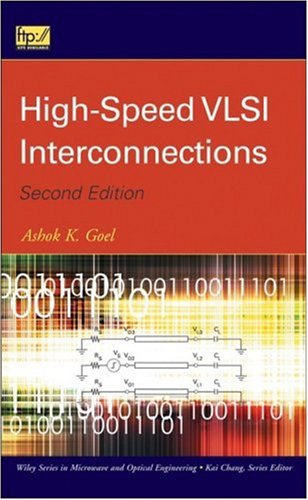
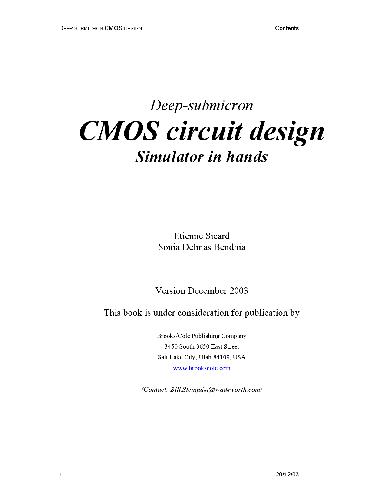
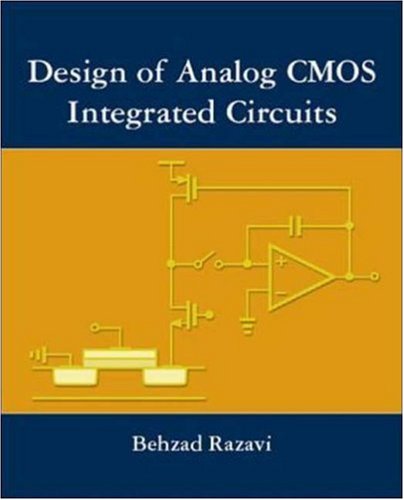
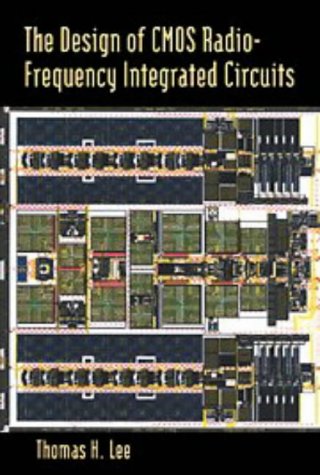
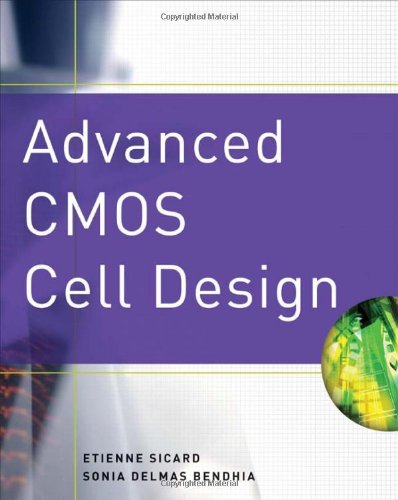


Reviews
There are no reviews yet.